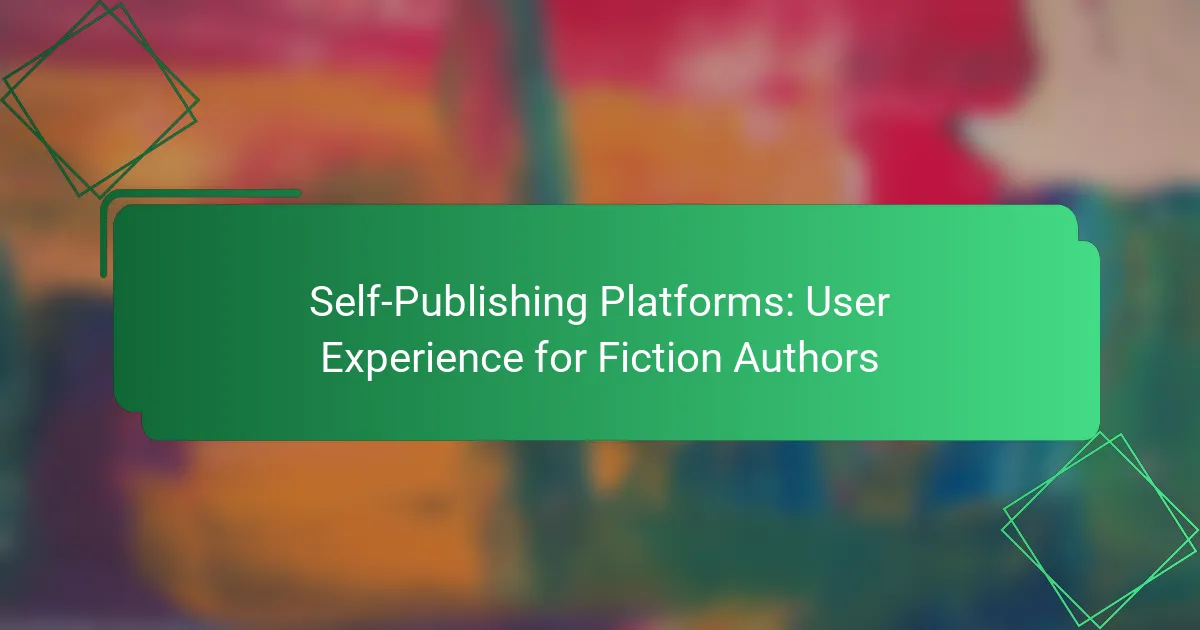For fiction authors venturing into self-publishing, selecting the right platform is crucial for a smooth experience. Prioritizing user-friendly interfaces, effective marketing tools, and strong customer support can greatly enhance the publishing journey. By understanding the varying user experiences across different platforms, authors can make informed decisions that align with their creative goals and audience reach.
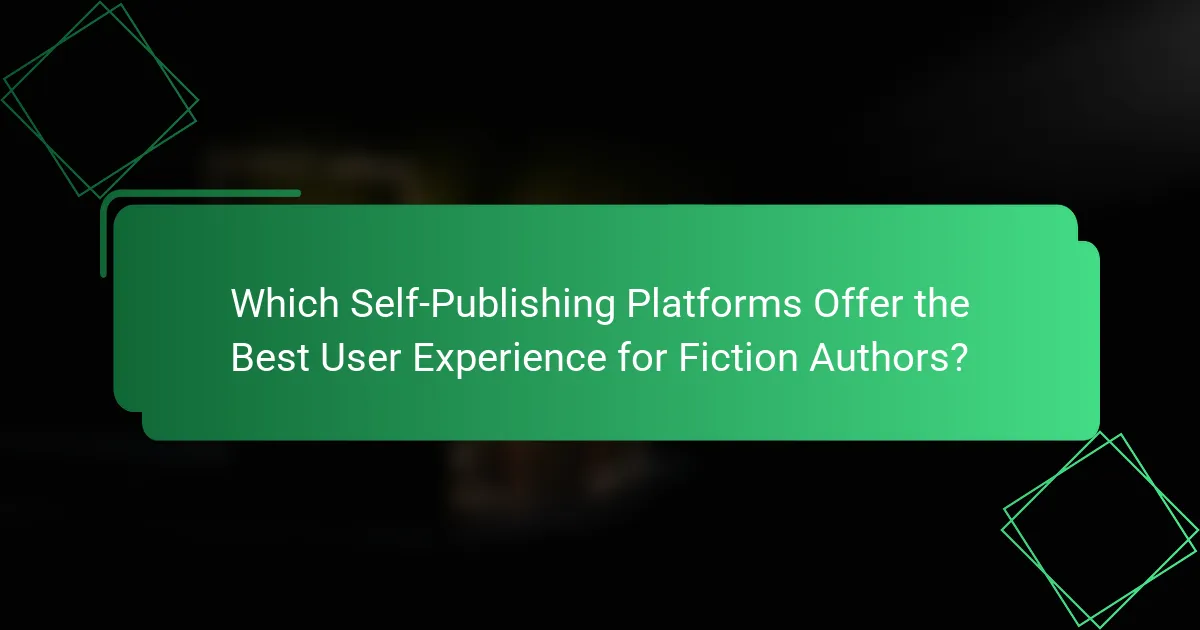
Which Self-Publishing Platforms Offer the Best User Experience for Fiction Authors?
Fiction authors seeking self-publishing platforms should prioritize user-friendly interfaces, streamlined processes, and robust support. The best platforms simplify the publishing journey while providing essential tools for marketing and distribution.
Amazon Kindle Direct Publishing
Amazon Kindle Direct Publishing (KDP) is a leading choice for fiction authors due to its extensive reach and user-friendly interface. Authors can publish eBooks and paperbacks quickly, often within a day, making it ideal for those looking to get their work to readers fast.
KDP offers a royalty structure of 35% to 70% depending on pricing, which is competitive in the market. However, authors should be aware of the exclusivity requirement for the 70% royalty option, which ties their eBooks to Amazon for a specified period.
IngramSpark
IngramSpark is known for its wide distribution network, allowing authors to reach bookstores and libraries. The platform is slightly more complex than KDP, requiring a bit more setup, but it offers a professional finish that appeals to serious authors.
Authors pay a small fee to publish, and while the upfront cost can be a drawback, the potential for broader distribution can justify the investment. IngramSpark also provides tools for print-on-demand services, which is beneficial for physical book sales.
Draft2Digital
Draft2Digital is celebrated for its simplicity and excellent customer service, making it a great option for first-time authors. The platform allows authors to publish eBooks across multiple retailers, including Apple Books and Barnes & Noble, without the hassle of managing each account separately.
With a straightforward royalty structure that takes a small percentage of sales, Draft2Digital is cost-effective. Additionally, the platform offers free formatting tools, which can save authors time and money in preparing their manuscripts.
Smashwords
Smashwords provides a unique approach by focusing on eBook distribution to a variety of retailers and libraries. The platform is user-friendly, but authors must adhere to specific formatting guidelines, which can be a learning curve for some.
Smashwords operates on a commission model, taking a percentage of sales, which is generally favorable for authors. However, the platform’s reach is not as extensive as some competitors, so authors should consider their target audience when choosing this option.
BookBaby
BookBaby stands out for its comprehensive publishing services, including editing, cover design, and marketing support. This platform is ideal for authors who want a more hands-off approach to the publishing process and are willing to invest in professional services.
While BookBaby charges upfront fees for its services, the quality and support provided can be worth the cost for authors looking to produce a polished final product. The platform also offers a straightforward distribution process, ensuring that books reach major retailers efficiently.

How Do User Experiences Differ Across Platforms?
User experiences on self-publishing platforms can vary significantly based on interface design, customer support, and distribution options. Understanding these differences helps fiction authors choose the right platform for their needs.
Interface design and usability
The interface design of a self-publishing platform greatly impacts usability for authors. A clean, intuitive layout allows for easier navigation and quicker access to essential features like manuscript uploads and formatting tools. Look for platforms that offer user-friendly dashboards and straightforward publishing processes.
Consider platforms that provide templates and guides to assist with formatting. This can save time and reduce frustration, especially for authors who may not be tech-savvy. Prioritize platforms that allow for easy customization of book covers and layouts to enhance the overall presentation of your work.
Customer support availability
Customer support is crucial when navigating the self-publishing process. Platforms that offer multiple support channels—such as live chat, email, and phone support—tend to provide a better user experience. Quick response times can alleviate issues that may arise during the publishing journey.
Check if the platform has a comprehensive FAQ section or community forums. These resources can help authors find answers to common questions without needing direct support, which can be especially useful during peak publishing times.
Distribution options
Distribution options vary widely among self-publishing platforms, affecting how and where your book can be sold. Some platforms offer broad distribution to major retailers, while others may focus on niche markets or specific regions. Assess your target audience to determine the best distribution strategy.
Consider platforms that allow for both eBook and print distribution, as this can maximize your reach. Additionally, look for options that provide control over pricing and royalties, ensuring you retain a fair share of your earnings. Understanding the terms of distribution agreements is essential to avoid unexpected limitations.
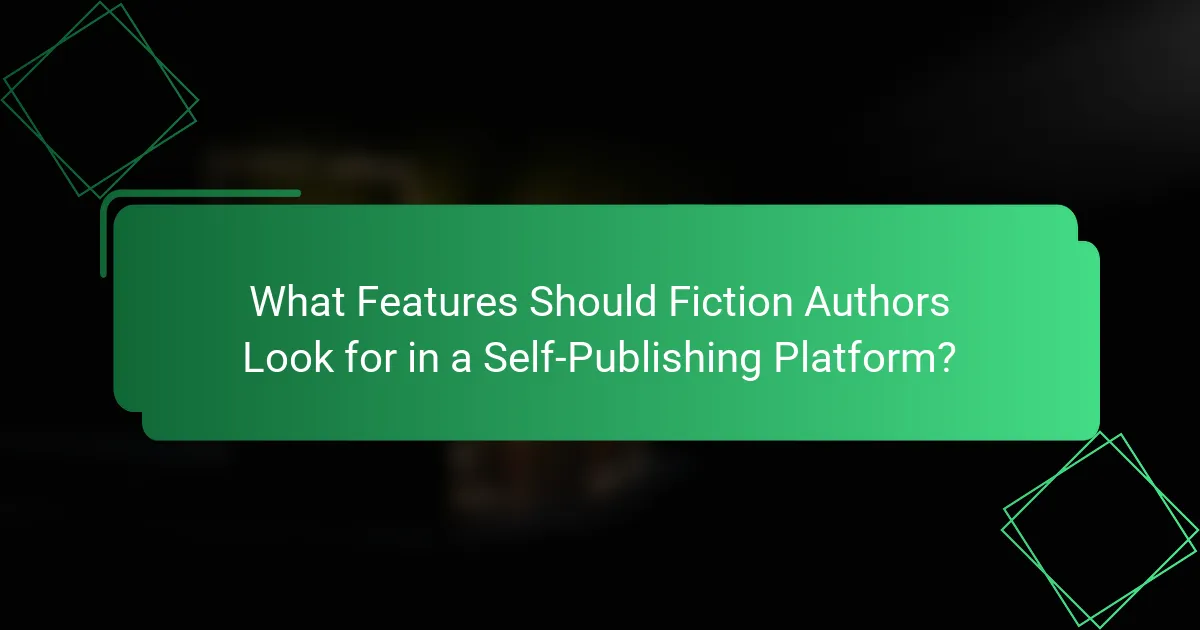
What Features Should Fiction Authors Look for in a Self-Publishing Platform?
Fiction authors should prioritize user-friendly features, flexible pricing, and robust marketing support when choosing a self-publishing platform. These elements can significantly impact the ease of publishing and the potential for reaching a wider audience.
Formatting tools
Effective formatting tools are essential for fiction authors to ensure their manuscripts meet industry standards. Look for platforms that offer customizable templates and easy-to-use editors, allowing you to format your book for both eBook and print versions without needing extensive technical skills.
Some platforms provide automated formatting options, which can save time and reduce errors. Consider platforms that allow you to preview your book in different formats to ensure it appears professional across devices.
Royalties and pricing structures
Understanding royalties and pricing structures is crucial for maximizing your earnings as a fiction author. Most self-publishing platforms offer royalty rates ranging from 35% to 70%, depending on the pricing of your book and the distribution channels you choose.
Evaluate how each platform calculates royalties and whether they charge additional fees for services like distribution or printing. It’s beneficial to select a platform that offers transparency in its pricing model, allowing you to forecast your potential earnings accurately.
Marketing support
Marketing support can significantly enhance your book’s visibility and sales. Look for self-publishing platforms that provide promotional tools, such as social media integration, email marketing options, and access to advertising networks.
Some platforms may offer additional services like book reviews, promotional campaigns, or partnerships with online retailers. Assess the marketing resources available to you and consider how they align with your promotional strategies to effectively reach your target audience.
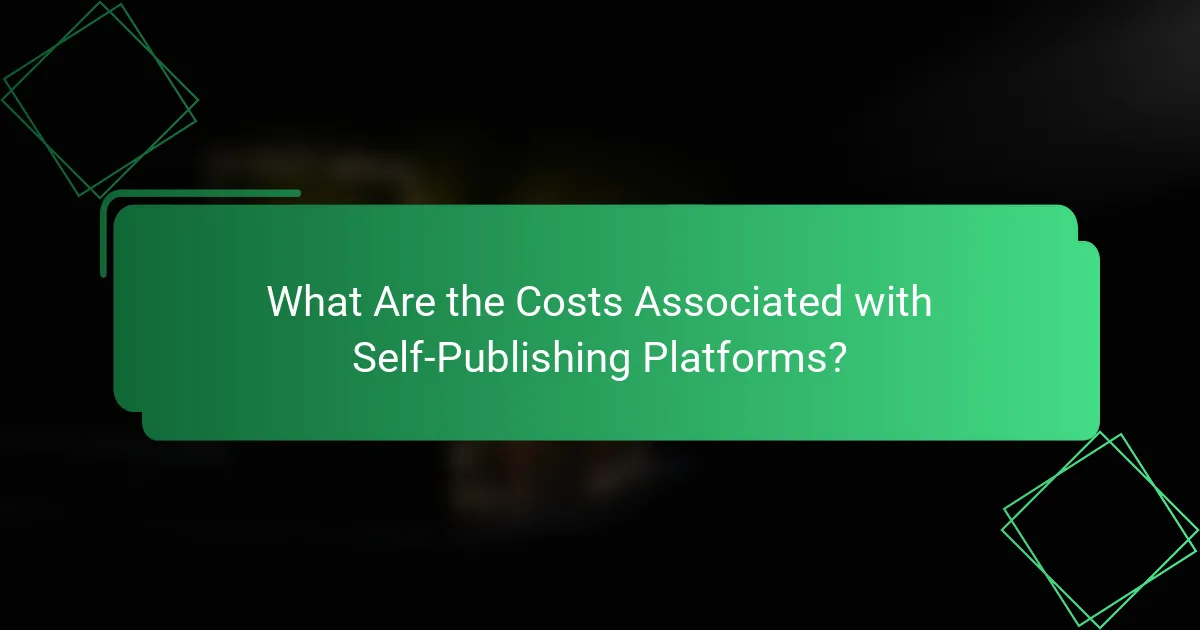
What Are the Costs Associated with Self-Publishing Platforms?
The costs associated with self-publishing platforms can vary widely depending on the services offered and the author’s needs. Authors should consider upfront fees, commission rates, and additional service costs when budgeting for their self-publishing journey.
Upfront fees
Upfront fees are the initial costs that authors pay to publish their work on a platform. These can range from a few dollars for basic services to several hundred for premium packages that include editing, formatting, and cover design. It’s essential to review what each fee covers to avoid unexpected expenses.
Some platforms offer free publishing options but may charge for essential services, so authors should weigh the benefits of investing in upfront fees against potential long-term gains.
Commission rates
Commission rates are the percentages that self-publishing platforms take from each sale of the author’s book. These rates typically range from 15% to 30%, depending on the platform and distribution channels. Authors should compare commission structures to determine which platform offers the best return on their sales.
It’s crucial to understand how these rates impact overall earnings, especially when pricing books competitively. Some platforms may offer higher commissions for exclusive content, which could influence an author’s decision.
Additional service costs
Additional service costs include optional services such as marketing, promotional tools, and distribution to wider markets. These costs can add up quickly, often ranging from a few dollars to thousands, depending on the services chosen. Authors should evaluate which services are necessary for their goals and budget accordingly.
Many platforms provide bundled services at a discounted rate, so it’s wise to explore these options. Authors should also be cautious of hidden fees that may arise during the publishing process, ensuring they read the fine print before committing.
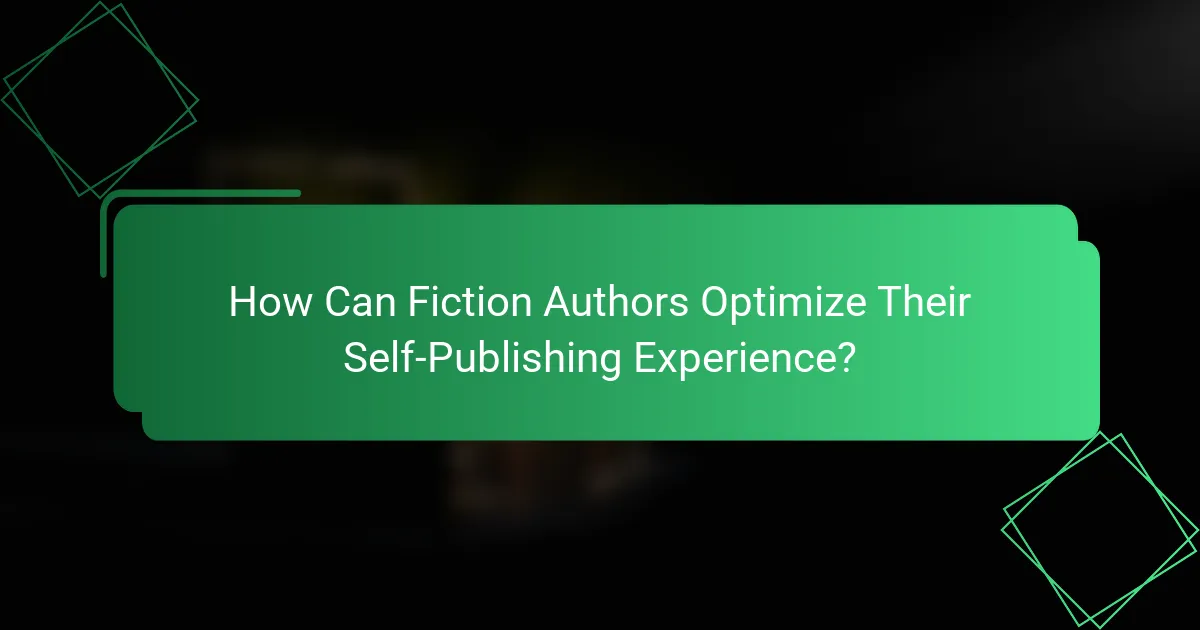
How Can Fiction Authors Optimize Their Self-Publishing Experience?
Fiction authors can enhance their self-publishing journey by leveraging tools and strategies that streamline the process and improve visibility. Key areas to focus on include understanding analytics, engaging with readers, and optimizing marketing efforts.
Utilizing analytics tools
Analytics tools are essential for fiction authors to track their book’s performance and reader engagement. By analyzing sales data, reader demographics, and marketing effectiveness, authors can make informed decisions to enhance their self-publishing strategies.
Popular platforms like Amazon KDP and Smashwords offer built-in analytics that provide insights into sales trends and reader behavior. Authors should regularly review these metrics to identify which marketing tactics are working and where adjustments are needed.
When using analytics, focus on key performance indicators such as sales volume, conversion rates, and reader reviews. Setting specific goals, like increasing monthly sales by a certain percentage, can help authors stay on track and measure success effectively.
